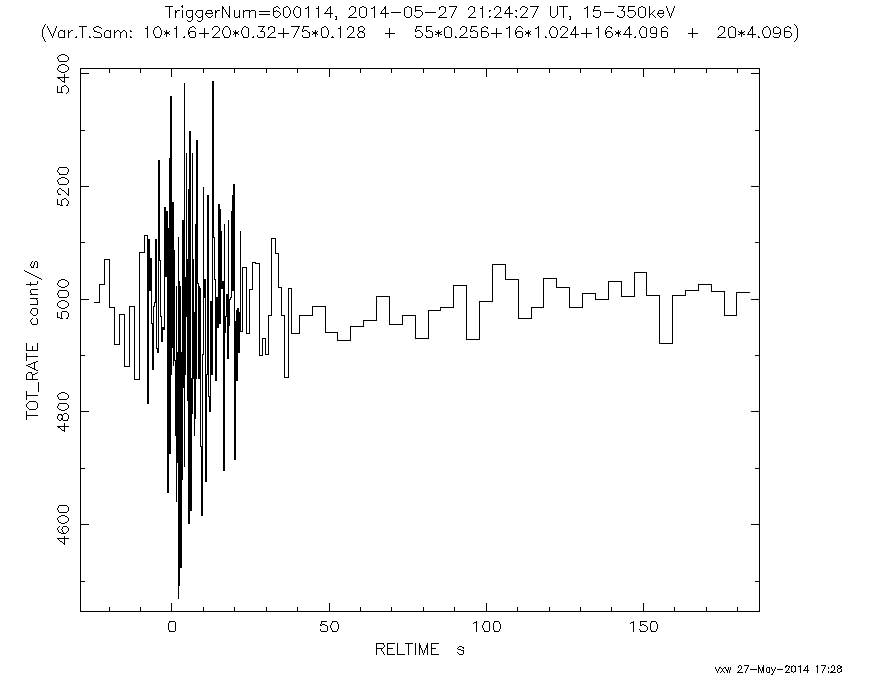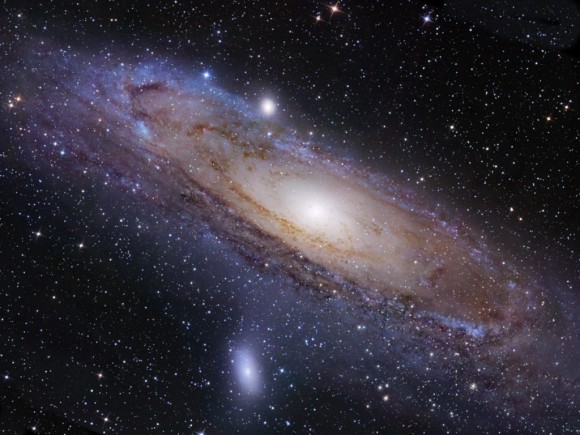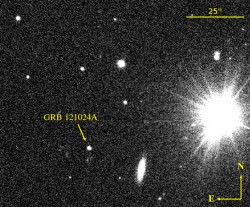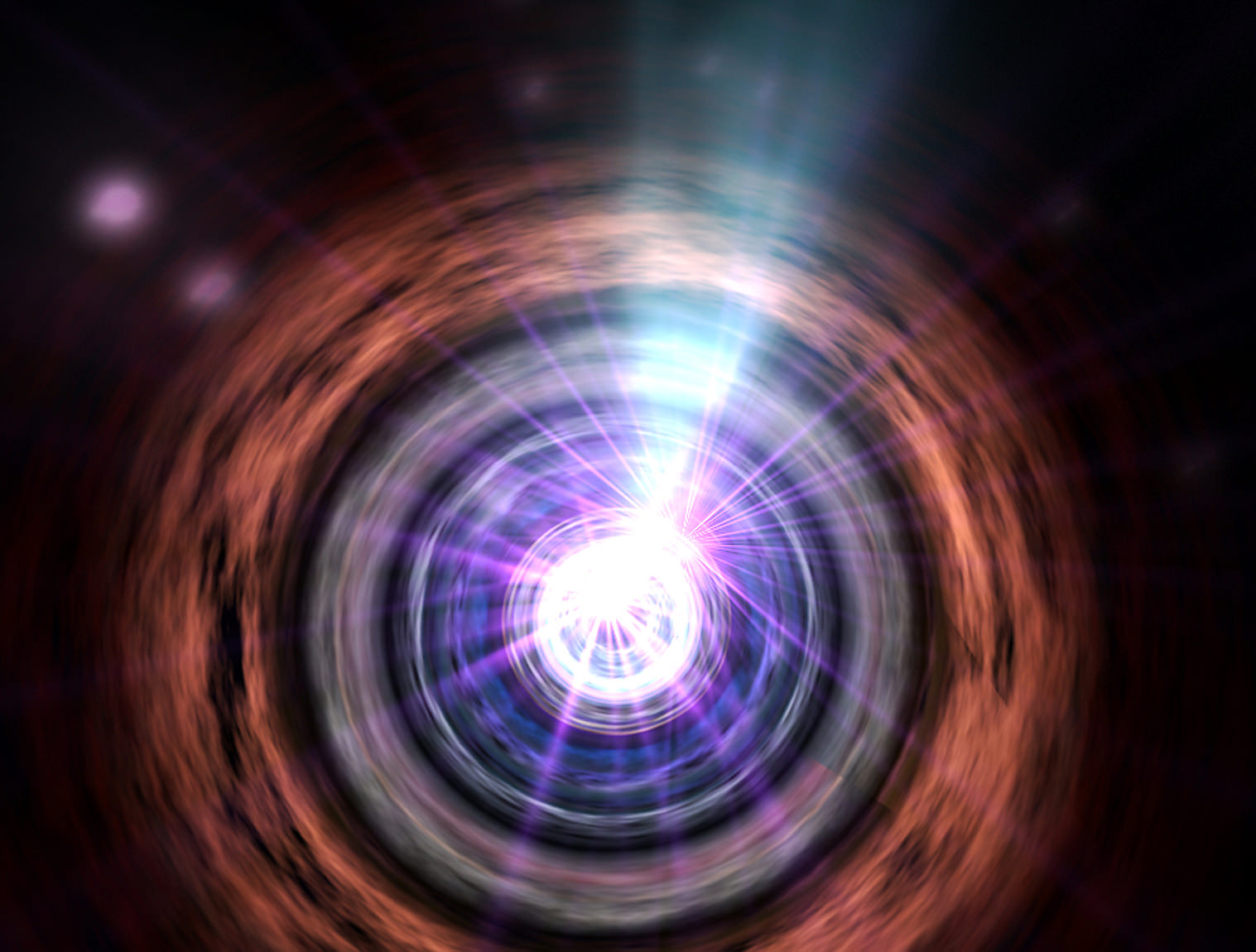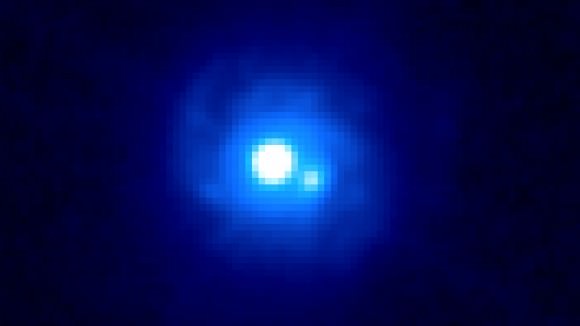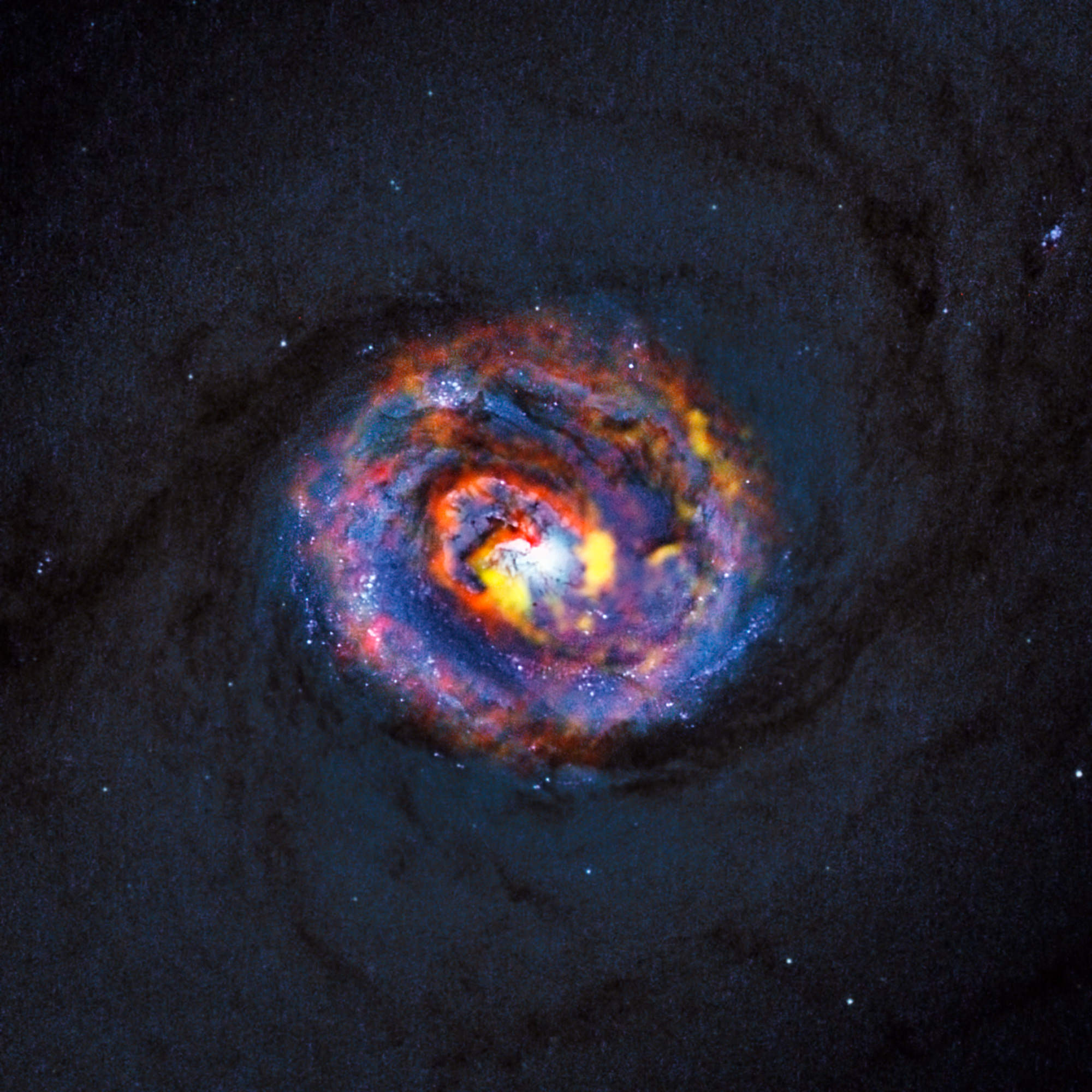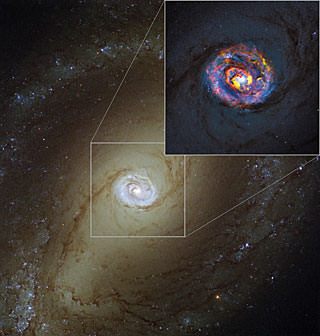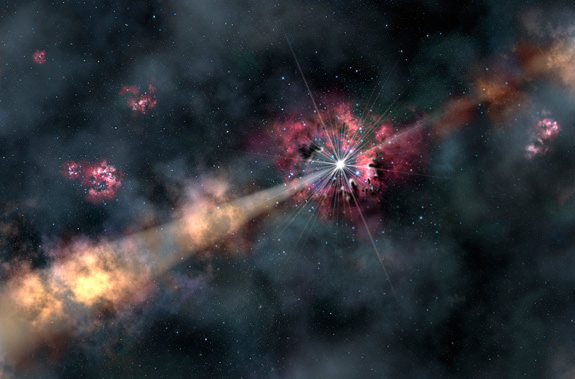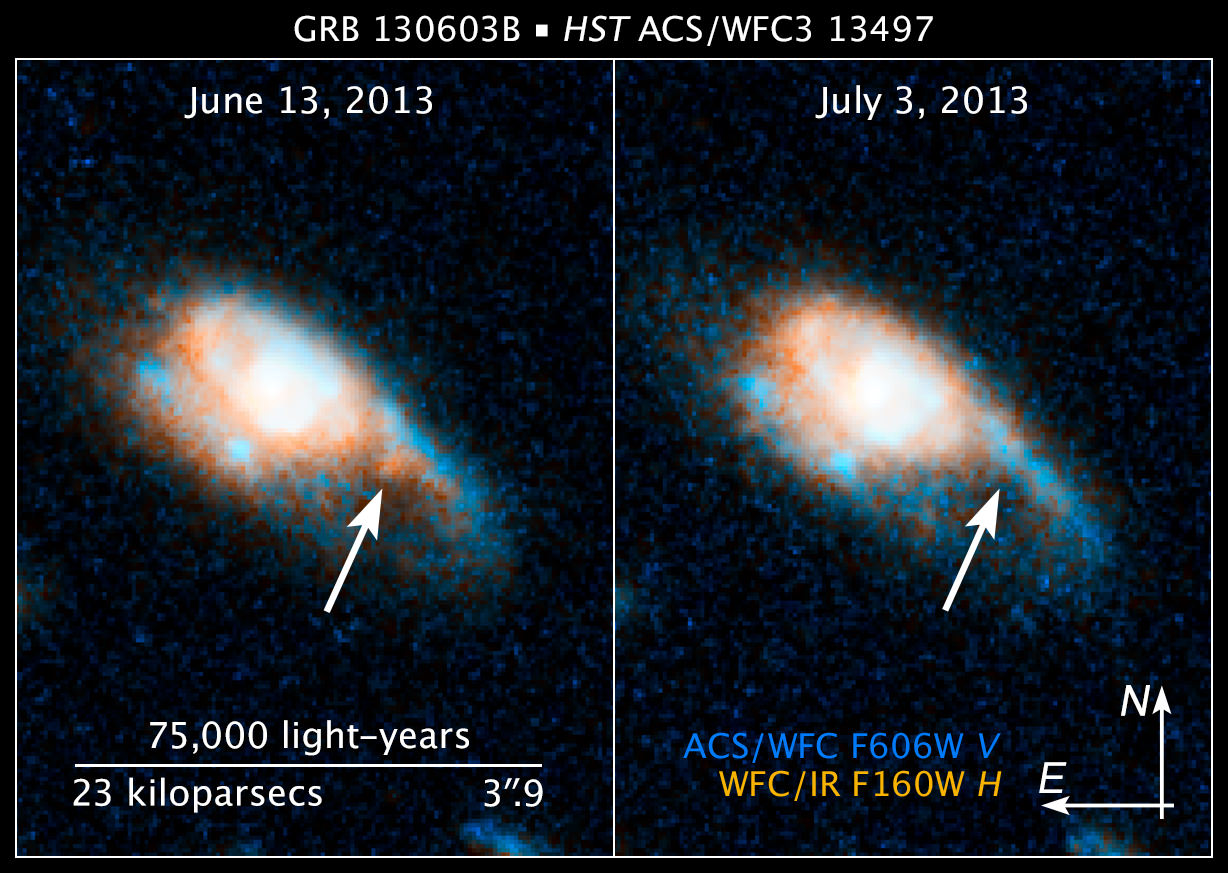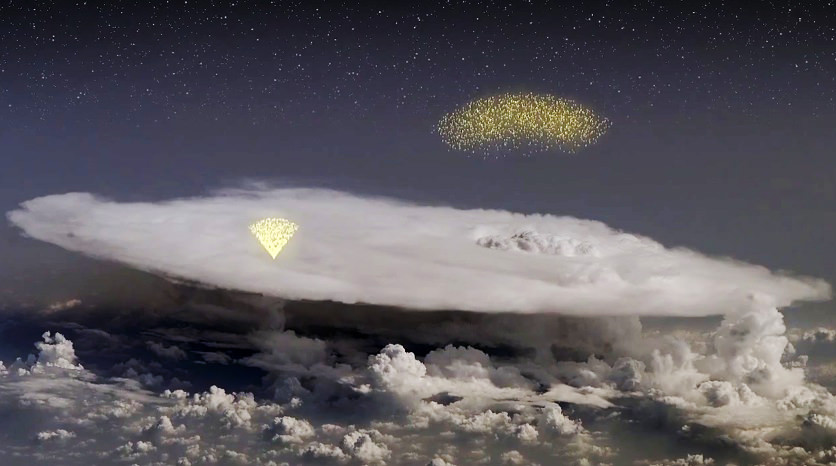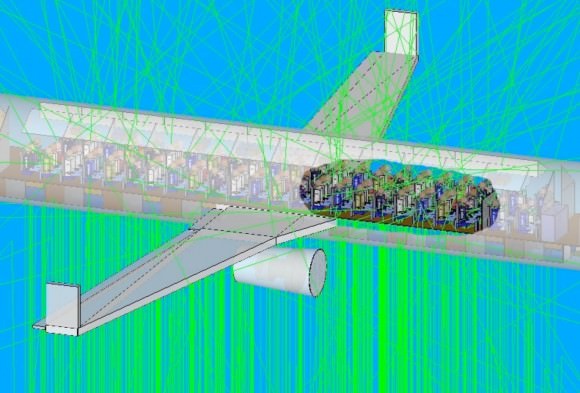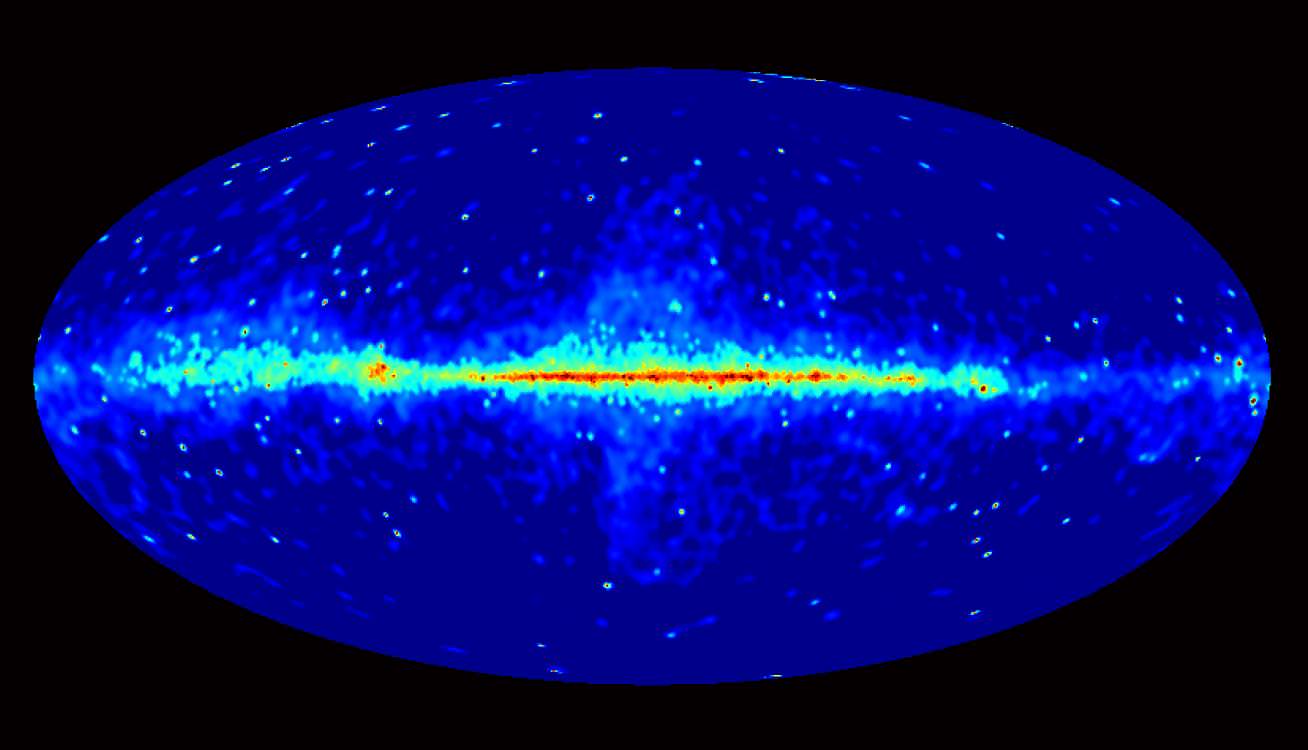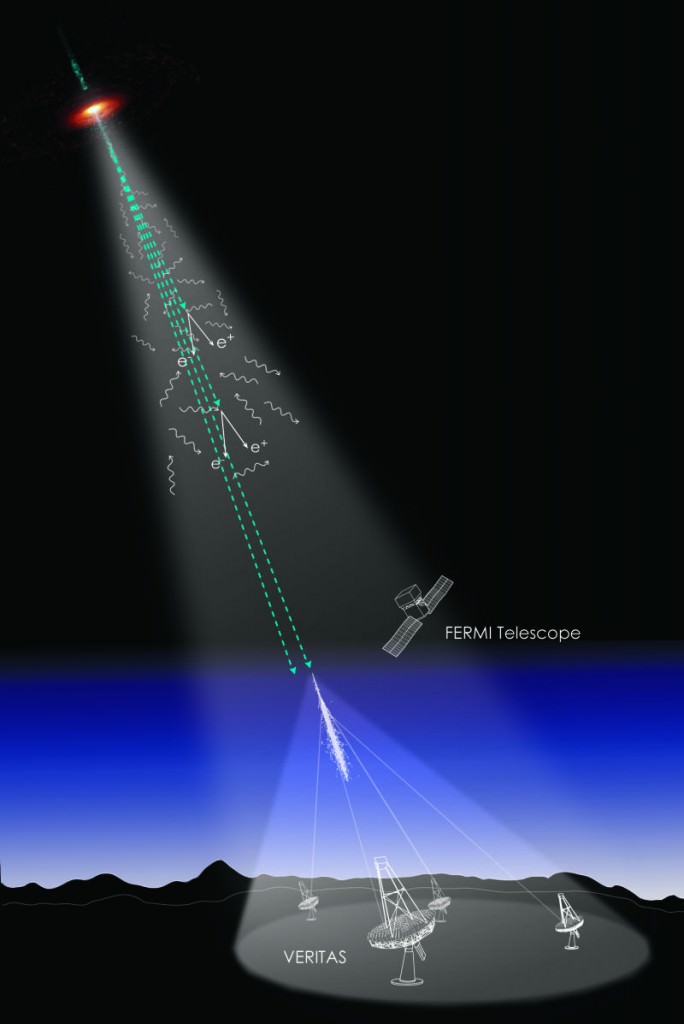Following the late night news yesterday of a possible gamma ray burst in our next door neighboring galaxy Andromeda, it was an “Oh darn!” moment this morning to find out the big event was likely a false alarm. The false alert — and the ensuing false excitement — was due to an unlikely combination of Swift’s Burst Alert Telescope (BAT) detecting what was a previously known object and a power outage at Goddard Space Flight Center and Swift Data Center, so that the data couldn’t be analyzed by the regular team of astronomers around the world.
Also, according to a blog post by Phil Evans, a post-doctoral research assistant from the University of Leicester and a member of the support team for Swift, the Swift team never actually announced a claim of such an event, and it turns out that the tentative data that triggered this story was overstated.
“Interestingly, the Swift team never claimed it was [a GRB]; indeed, I haven’t seen any professional communication claiming that this was a GRB,” Evans wrote on his blog. “Why it has been reported throughout the web as a GRB is something I can only speculate on, but Swift has been fabulously successful studying GRBs.”
Definitely read Evans’ entire analysis of the event.
A circular posted from the Swift-XRT team” on NASA’s Gamma-ray Coordinates Network (GCN) system at says that the astronomers “do not believe this source to be in outburst”. On the Nature blog, Alexandra Witze spoke with Swift team member Kim Page, also from the University of Leicester, who told Nature “that the source had been initially mistaken for a new outburst, and that its intensity had been overestimated due to measurement error. Instead, she says, it was a relatively common, persistent x-ray source — possibly a globular cluster — that had previously been catalogued.”
Here’s the circular in its entirety:
We have re-analysed the prompt XRT data on Swift trigger 600114 (GCN Circ.
16332), taking advantage of the event data.The initial count rate given in GCN Circ. 16332 was based on raw data from
the full field of view, without X-ray event detection, and therefore may
have been affected by other sources in M31, as well as background hot
pixels. Analysis of the event data (not fully available at the time of the
initial circular) shows the count rate of the X-ray source identified in
GCN Circ. 16332 to have been 0.065 +/- 0.012 count s^-1, consistent with
the previous observations of this source [see the 1SXPS catalogue (Evans
et al. 2014): http://www.swift.ac.uk/1SXPS/1SXPS%20J004143.1%2B413420].We therefore do not believe this source to be in outburst. Instead, it was
a serendipitous constant source in the field of view of a BAT subthreshold
trigger.This circular is an official product of the Swift-XRT team.
The event caused a tweet-storm last night on Twitter (see #GRBM31) and as many have said, the excitement was magnified because of the ability to spread news quickly via social media:
The dangers of instant science: #GRBM31 was a false alarm. http://t.co/RGXPpJ4bZF @Summer_Ash @mikamckinnon
— Jonathan McDowell (@planet4589) May 28, 2014
Astronomer Robert Rutledge, who publishes the Astronomer’s Telegram has given a Tweet-by-Tweet analysis of what happened with the false alarm:
(8/15) The science 'Chain of Evidence' means, wrong analysis produces wrong numbers produces wrong conclusions #GRBm31 #doesnotexist
— Robert Rutledge (@rerutled) May 28, 2014
(9/15) So: Wrong X-ray brightness -> wrong conclusion abt nature of source = No GRB = No ULX. #GRBM31 #DoesNotExist
— Robert Rutledge (@rerutled) May 28, 2014
(10/15) You may ask: How could @NASASwift scientists get the brightness wrong of #GRBm31 by a factor of 300? #DoesNotExist
— Robert Rutledge (@rerutled) May 28, 2014
(11/15) First, @NASASwift scientists are among the best in the world. Top rated by NASA in the recent Senior Review! #GRBM31 #DoesNotExist
— Robert Rutledge (@rerutled) May 28, 2014
(12/15) Here, they probably relied on analysis programs which NORMALLY work. But, the programs 'glitched' #GRBM31 #DoesNotExist
— Robert Rutledge (@rerutled) May 28, 2014
(13/15) Usu. other scientists would get the data and look too! BUT last night, a storm took out @NASAGoddard Internet #GRBM31 #DoesNotExist
— Robert Rutledge (@rerutled) May 28, 2014
(14/15) With @NASAGoddard internet disrupted nobody else could analyse the #GRBM31 Data! We all relied on the @NASASwift GCN #DoesNotExist
— Robert Rutledge (@rerutled) May 28, 2014
(15/15) Analysis mistake->wrong result+ @NASAGoddard Internet down->no 'second eyes' to double check->wrong conclusion #GRBm31 #DoesNotExist
— Robert Rutledge (@rerutled) May 28, 2014


